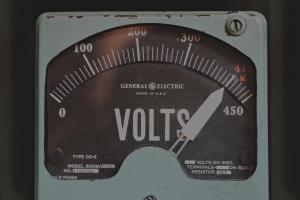The Difference Between Amps, Watts, and Volts

Amps, watts, and volts – you might have an idea as to what these terms are, but knowing the difference between them might be like treading in uncharted territory. Luckily, as a licensed electrician in Toronto – Astron Electric Ltd. is capable of providing you with the answers you need!
Fundamentally, amps, watts, and volts are the three most basic units we use to measure electricity.
Each measurement allows licensed electricians in Toronto to make decisions when having to service your home or building’s electricity supply and systems.
What’s the difference between Amps, Watts, and Volts?
An amp is short for ampere, which describes how fast an electric current flows. A watt describes the basic unit of electric power and is equal to one joule per second, electrical power is measured in watts. A volt describes electromotive force – it is the difference of potential that drives an amp of current against the resistance of ohm.
What is Ohm’s Law?
The relationship between these three units is known as Ohm’s Law. In essence it states that the current is equal to voltage divided by resistance. It can be described as I = V/R or current = voltage / resistance. Ohm was named after the German physicist Georg Simon Ohm, who discovered that there is a direct proportionality that exists between the voltage when applied across a conduct, and the resulting electrical current.
The Plumbing Analogy
A common analogy used to explain the difference between these units by licensed electricians in Toronto is the plumbing pipes analogy. The voltage can be thought of as the water pressure, the current can be thought of as the flow rate, and the resistance can be thought of as the pipe size.
In instances where you’re looking for a larger flow of water, you do so by ensuring there is increased pressure in the tank. The same is typical of an electrical system whereby increasing the voltage will result in more current to flow. The same result will occur if you increase the diameter of the pipe size to the tank – this is similar to decreasing the total resistance in an electrical system which will also result in more current to flow.




